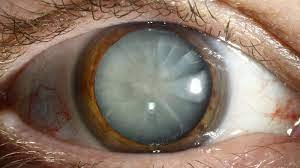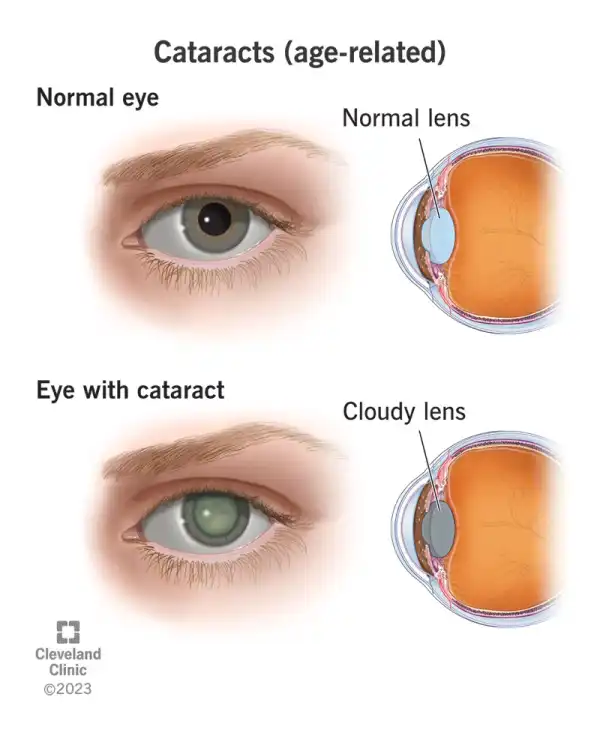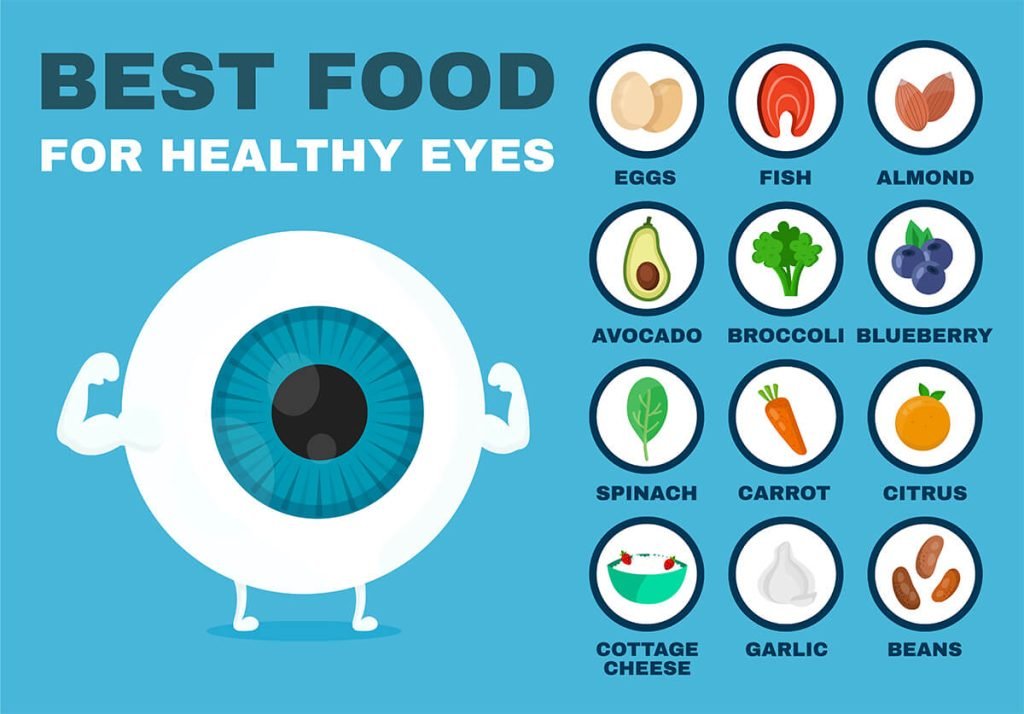Hyperbaric Oxygen Therapy And Cataracts According To Research

Are you curious about the potential benefits of hyperbaric oxygen therapy and cataracts?
This article delves into what research says about this treatment option.
Discover the first signs of cataracts, explore the impact of diet on cataract development, and learn about the most common treatment methods.
Find out how hyperbaric oxygen therapy can affect cataracts and get answers to frequently asked questions.
With an objective, evidence-based approach, this article aims to provide you with a detailed understanding of this topic.
What are Cataracts?
Cataracts can cause your vision to become cloudy and blurry over time. A cataract is a clouding of the lens in your eye, which affects the way light enters your eye and leads to vision problems.

The lens is normally clear, allowing light to pass through and focus on the retina at the back of the eye. However, as you age, protein in the lens can start to clump together, forming a cataract. This can result in a gradual deterioration of your vision, making it difficult to see clearly.
Cataracts are commonly associated with aging, but they can also develop as a result of other factors such as diabetes, smoking, or exposure to ultraviolet radiation.
While cataracts are typically painless, they can cause symptoms such as blurry vision, difficulty seeing at night, sensitivity to light, and seeing halos around lights.
If left untreated, cataracts can significantly impact your ability to perform daily activities and lead to vision loss.
However, cataract surgery is a highly effective treatment option, where the cloudy lens is removed and replaced with an artificial lens, restoring clear vision (more on that down the line).
What are the first signs of having cataracts?
Have you noticed any changes in your vision, such as cloudy or blurred vision, that could be an early sign of cataracts? It’s important to recognize these early signs, as cataracts can significantly impact your vision and quality of life.
Here are five common signs that may indicate the presence of cataracts:
- Cloudy or blurry vision: Cataracts cause the lens of your eye to become cloudy, leading to a gradual decline in vision clarity.
- Sensitivity to light: You may find yourself experiencing increased sensitivity to bright lights or glare, making it difficult to see in certain environments.
- Difficulty seeing at night: Cataracts can make it challenging to see clearly in low-light conditions, such as driving at night or in dimly lit rooms.
- Fading or yellowing of colors: Colors may appear dull or faded, and you may notice a yellowish tint to your vision.
- Double vision: Cataracts can cause double vision or multiple images in one eye, which can make tasks like reading or driving particularly challenging.
If you’re experiencing any of these symptoms, it’s crucial to consult with an eye care professional for a comprehensive eye examination.
Does Diet Affect Cataract Development?
Including a variety of fruits, vegetables, whole grains, and nuts in your diet can potentially reduce the risk of developing cataracts.

Research suggests that certain nutrients found in these foods may play a role in maintaining eye health and preventing the formation of cataracts.
For example, vitamin C, which can be obtained from oranges, guavas, dark leafy greens, and bell peppers, has been shown to have antioxidant properties that protect the eyes from oxidative stress.
Additionally, carotenoids, such as those found in cantaloupes, sweet potatoes, and carrots, have been linked to a reduced risk of cataract development.
Omega-3 fatty acids, present in flax seeds and fatty fish, may also have a protective effect on the lens of the eye.
Moreover, nuts and seeds, such as walnuts and sunflower seeds, provide vitamin E and antioxidants, which can contribute to overall eye health.
Consuming whole grains, like brown rice and quinoa, can further support eye health due to their high fiber content and potential to lower the risk of certain chronic diseases associated with cataracts.
What is the most common treatment for cataracts?
If you’re experiencing cataracts, the most common treatment option is surgery to remove the clouded lens and replace it with an artificial lens.
Cataract surgery is considered when non-surgical measures, such as new eyeglasses or magnifying lenses, don’t alleviate symptoms.
Here are five key points about cataract surgery:
- Surgery is performed when cataracts progress and interfere with daily activities. It’s usually done on one eye at a time to minimize complications.
- The surgery is performed in an outpatient surgical center with local anesthesia. This means you won’t be put to sleep, but your eye will be numbed.
- The procedure involves removing the clouded lens and replacing it with an artificial lens. This can improve your vision and reduce the impact of cataracts on your daily life.
- After surgery, you may be advised to wear an eye patch and night guard patch to protect your eye while it heals.
- Post-operative medications, such as eye drops, will be prescribed for about three to four weeks to help prevent infection and promote healing.
It’s important to note that not all cataracts require surgery. If your lifestyle isn’t significantly affected or if your vision can be improved with glasses or contact lenses, surgery may not be necessary.
How Hyperbaric Oxygen Therapy Affects Cataracts?
When undergoing hyperbaric oxygen therapy, the increased exposure to oxygen can potentially contribute to the development and progression of cataracts in your eyes.
Cataracts are opacities in the lens that can cause blindness. While age, smoking, UV exposure, and diabetes are known risk factors for cataract formation, hyperbaric oxygen therapy can also play a role.
The therapy increases the production of harmful reactive species, overwhelming the natural defense mechanisms of the lens. This leads to oxidative and toxic insults to the lens, contributing to cataract formation.
It is important to note that cataracts are less likely to form under the normal duration of therapy. However, if cataracts do form or progress, they’re irreversible and may require surgery.
Prolonged therapy, particularly with a high number of sessions exceeding 100, increases the risk of irreversible refractive changes, including cataract formation.
Therefore, it’s crucial for patients undergoing hyperbaric oxygen therapy to be aware of the potential ocular side effects, including cataracts.
Hyperbaric Oxygen Therapy And Cataracts: What Research Says
Let’s examine what published research is saying about Hyperbaric Oxygen Therapy and Cataracts.
1. Hyperbaric Related Myopia and Cataract Formation
In an article published in the National Center For Biotechnology Information, researchers explored the effects of hyperbaric oxygen therapy on the body, particularly on the eyes. Hyperbaric oxygen therapy involves breathing in oxygen at higher pressures than normal. While oxygen is essential for our bodies, it can sometimes cause harm by creating harmful substances called oxygen free radicals during normal metabolic processes.
The study focused on how this therapy, with its increased oxygen levels, might lead to the production of too many of these harmful substances. Normally, our body has defenses, like an enzyme called superoxide dismutase, to get rid of these harmful substances. But under the intense oxygen conditions of hyperbaric therapy, these defenses might get overwhelmed, causing oxygen toxicity and damage to cells.
The researchers found that one part of the eye, the lens, is particularly sensitive to this oxygen overload. People undergoing hyperbaric therapy might experience symptoms like twitching eyelids, blurry vision, and problems with their field of vision. Many of these symptoms are linked to the lens getting damaged due to too much oxygen, which can lead to eye problems like nearsightedness and the development of cataracts.
It’s important to note that most of these eye issues can be reversed when the therapy is stopped, but in some cases, if the therapy is prolonged, the damage might become permanent. The study also emphasized the need for healthcare teams to educate patients about these potential side effects when considering hyperbaric oxygen therapy.
2. Cataract development following a standard course of Hyperbaric Oxygen Therapy
In another article published in the journal Undersea & Hyperbaric Medicine, there’s a report about a 49-year-old woman who underwent 48 sessions of hyperbaric oxygen therapy (HBO2). She had this therapy because of a stubborn bone infection in her sacrum and problems with a surgical flap in that area.
Before she started the HBO2 therapy, she went to an eye doctor, and they found that she had nearsightedness (myopia), but there was no sign of cataracts (clouding of the eye lens).
However, after she finished all those HBO2 treatments, about eight weeks later, she went for another eye checkup. This time, they found that her nearsightedness had gotten worse, and there were changes in the lenses of her eyes that looked like the beginning of cataracts.
Cataracts are usually linked to things like diabetes, long-term use of certain medicines (like corticosteroids), or too much exposure to sunlight. But in this case, none of these usual causes seemed to apply.
This report is important because it raises questions about whether HBO2 therapy might have some effect on the eyes, like causing cataracts, even though this is quite rare.
3. Effect of exposure to hyperbaric oxygen on diabetes-induced cataracts in mice
In a Japanese study published in the Journal of Diabetes, scientists looked at how a treatment called “moderate hyperbaric oxygen” (mHBO) affects cataracts in mice with Type 2 diabetes.
Here’s what they did: They took young mice with Type 2 diabetes and cataracts and they exposed these mice to a hyperbaric oxygen environment. This treatment went on for 12 weeks. After that, the mice went back to normal conditions for 16 more weeks.
The researchers measured the mice’s blood sugar levels and how much oxidative stress they had during this time. Oxidative stress is when there are harmful chemicals in the body due to oxygen.
What they found was that the mice exposed to this special oxygen treatment had lower blood sugar levels, less oxidative stress, and their cataracts developed more slowly compared to the mice that didn’t get this treatment.
So, the study suggests that this type of oxygen treatment could help delay the development and progression of cataracts in mice with Type 2 diabetes. It’s an interesting finding that might have implications for diabetes-related eye problems in the future.
4. Hyperbaric Oxygen Therapy for PAMM After Cataract Surgery and Fasting: A Case Study
In a study, researchers looked at a rare eye condition called “Paracentral Acute Middle Maculopathy” or PAMM, which shows up as unusual patterns in eye scans. (PAMM usually happens when there isn’t enough blood flow to a certain part of the eye).
They wanted to understand if cataract surgery and fasting (like during Ramadan) might be linked to PAMM. They also wanted to see if hyperbaric oxygen therapy could help.
Here’s what happened:
A 66-year-old man who had cataract surgery and was fasting during Ramadan started having severe vision problems. When doctors checked his eyes, they found something strange in the scans. They could see an area in his eye that didn’t look right, suggesting he had PAMM.
To treat him, they gave him 14 sessions of hyperbaric oxygen therapy, where he breathed in oxygen in a special pressurized chamber. After these treatments, his vision got much better.
The study is interesting because it’s the first time they’ve seen PAMM possibly linked to fasting and cataract surgery, although they’re not completely sure if these factors caused it. It’s also the first case where hyperbaric oxygen therapy seemed to help with PAMM.
However, they mention that this patient had other health issues too, so there might be more to the story.
Frequently Asked Questions
If you’ve questions about cataracts and their treatment, you’re not alone. Here are some frequently asked questions that provide evidence-based answers.
Final Take
In conclusion, it seems that Hyperbaric Oxygen Therapy might cause cataracts if the patient is exposed to prolonged treatment. What does prolonged treatment means? 50 sessions, 100 seesions?
It is also important to note that most of these eye issues can be reversed when the therapy is stopped, but in some cases – might become permanent.
Thus it is very important to talk to your doctor if you have any health issues that might make your HBOT therapy complicated.
Read Next
